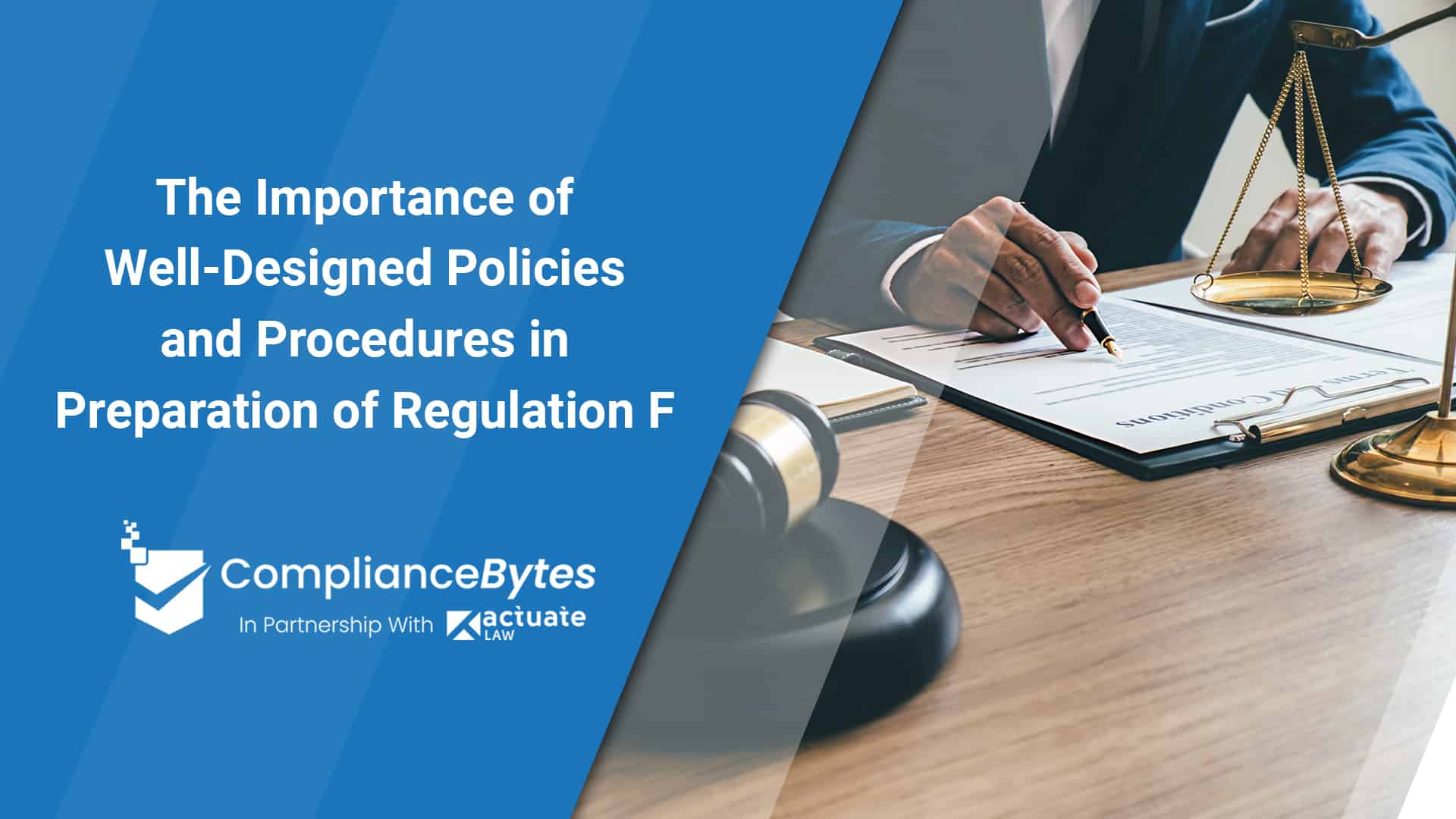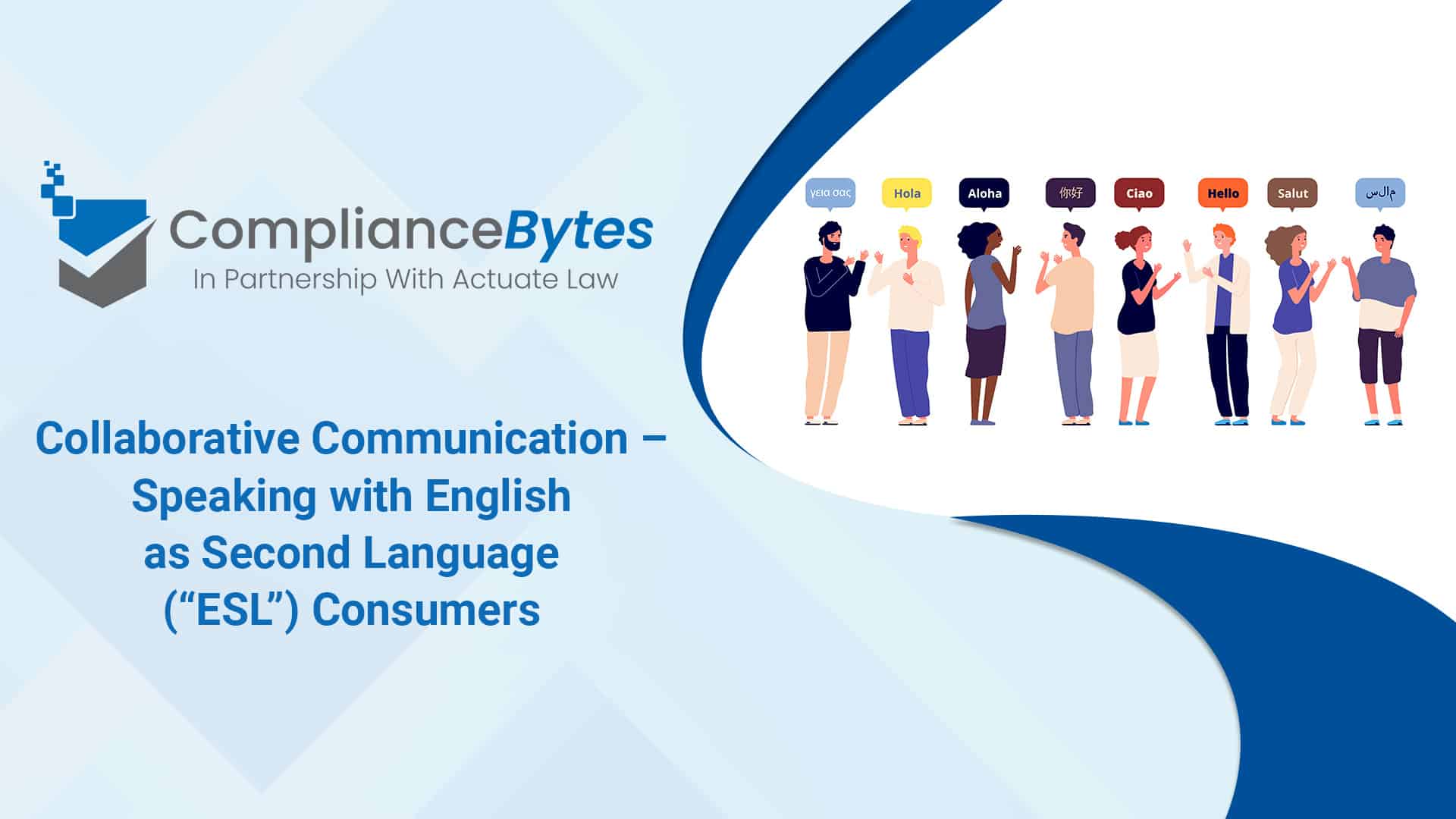
The Importance of Well-Designed Policies and Procedures in Preparation of Regulation F
It is the final countdown! Regulation F’s effective date is around the corner and organizations are busy getting prepared. Many aspects of Regulation F are familiar, and many are completely new – and as such, we can expect to see plaintiffs test the waters with new legal theories and claims. This brings us to today’s topic: the importance of well-designed policies and procedures.
Policies and procedures can act as a shield or a sword when it comes to an organization’s defense. On the flipside, however, poorly designed (or nonexistent) policies and procedures can be an organization’s demise in a defense. Much of the Fair Debt Collection Practices Act (“FDCPA”) case law upon which we have built policies, procedures, and processes is going to be “reset” after Regulation F. Case in point – Zortman v. J.C. Christensen & Assocs., Inc., 870 F. Supp. 2d 694 (D. Minn. 2012). Many people asked, “can we still leave Zortman messages now that Regulation F provided a limited content message?” The answer is no, not if you want to avail yourself of Regulation F’s safe harbor from the prohibition against third party communications. The CFPB unequivocally clarified this in its recently released FAQs, stating that a Zortman message is not a limited content message when leaving a voicemail. If a collector leaves a Zortman message on a consumer’s voicemail after Regulation F’s effective date, I anticipate we will see Zortman relitigated and a court’s analysis may change now that we have an approved voicemail message from the CFPB.
Although the accounts receivables industry is bracing for impact, organizations should be not sitting idly. If you dissect Regulation F, there are approximately 128 to 243 changes that will need to be made to an organization’s policies, procedures, letters, scripts, system workflows, file layouts, and training materials (depending on the level of complexity and sophistication of an organization’s system and existing processes, that estimation can go up or down.) That is a lot! If you work with competent counsel, they can help you right size a strategy and approach for integrating Regulation F compliance. The key is to not wait. Regulation F has made it clear that well designed policies and procedures will be an organization’s best defense when it’s go-time. Case in point, the Bureau has provided the industry with a formula to follow for a bona fide error defense when it comes to emailing and texting consumers. In other words, the Bureau has provided the industry with procedure outlines for emailing and texting consumers.
Preparing your policies and procedures for Regulation F can seem overwhelming, but it does not have to be if you take the time to understand the nuances of the rule and how the rule is constructed. For example, Regulation F can be organized into three categories such as:
- Category 1 – Content that is substantially the same as the FDCPA and simply restated. For example, the prohibitions of communicating with a consumer after having received a written refusal to pay or cease in § 1006.6(c)(1) is nearly identical to the same prohibition in 15 USC § 1692c(c).
- Category 2 – Content which is new and optional. For example, the procedures laid out for using emails and text messages in §§ 1006.6(d)(3)-(5) are new and optional if an organization is emailing and/or texting and wants to avail itself of the bona fide error defense laid out by the Bureau.
- Category 3 – Content which is new and mandatory. For example, the itemization date and other new pieces of information now required to be in the validation notice pursuant to §1006.34.
Understanding how the rule is constructed will help an organization determine the best way to prioritize the review and editing of its policies and procedures. However, a word of caution – industry webinars and discussions have focused a lot on categories 2 and 3, and not too much on category 1. Category 1 should not be overlooked. There are hidden gems in the Bureau’s Official Interpretation section which any well-prepared organization should be incorporating into their policies and procedures (and related materials like training programs and job aids). For example, the prohibitions regarding unusual or inconvenient times or places in § 1006.6(b)(1)(i) mirror section § 1692c(a)(1) of the FDCPA. However, the Official Interpretation provides a de facto rule for responding to a consumer during a time or at a place the consumer previously communicated was inconvenient (i.e., that rule being that a debt collector can respond once at that time/place through the same communication medium the consumer used). This de facto rule is disguised as an “Official Interpretation” rather than a rule, but let’s be real – it’s a rule which should be integrated into an organization’s policies and procedures governing contacts with a consumer. Do not overlook the hidden “rules” in the Official Interpretations that need to be integrated into an organization’s policies, procedures, training materials, and programmed system exceptions in workflows.
Regulation F has the effect of “resetting” much of the case law precedent that we relied on to design our policies and procedures. This means an organization should be looking at their policies and procedures as more than just documentation – because come November 30th, they are a critical component in any defense strategy. For the accounts receivable industry, the strength or weaknesses in companies’ policies and procedures will have unprecedented influence in shaping a whole new wave of FDCPA jurisprudence. We are sure to see some FDCPA battles out of the gate. Get your shields and swords ready – because it is our time to seize the moment and show consumers, consumer advocates, regulators, legislators, and the public how we do compliance – let’s knock their socks off!
Key Points:
- Read, and re-read, Regulation F’s Official Interpretation and FAQs. The Official Interpretation and FAQs provide excellent examples illustrating how many aspects of the rule works in application. Having a solid understanding of how the rule works in application will help you adapt your policies, procedures, training materials, etc. for Regulation F compliance.
- Scale the rule to help you scale your changes. Take the time to scale the rule by breaking it into different categories. The categories can help you plan, for example, how you are going to implement changes throughout your organization and make sure you are operationalizing changes at a cadence that will lead you to compliance by November 30th, while also helping you avoid creating compliance fatigue for your organization.
- Readjust your attitude towards policies and procedures. Do not look at updating your policies and procedures as a perfunctory ritual. Instead, appreciate the process because it is something within your control today that will help you tomorrow.
About Actuate Law
Founded by Big Law veterans, Chicago-based Actuate blends the nimble entrepreneurialism of a boutique start-up with the wisdom that comes with decades of deftly handling sophisticated litigation, transactional, and compliance matters. We combine talent and technology to craft bespoke legal solutions for the next generation of business leaders. Like the clients we serve, Actuate is constantly striving to achieve the “impossible triangle” of better, faster, and less costly. Our lawyers handle matters across the country in the areas of commercial litigation, class action defense, data security & privacy, e-discovery, financial services, information governance, private client services/trusts & estates, and white collar investigations and litigation. For more information visit, www.actuatelaw.com.
This information is not intended to be legal advice and may not be used as legal advice. Legal advice must be tailored to the specific circumstances of each case.
By Lauren Valenzuela, Counsel at Actuate Law, LLC




